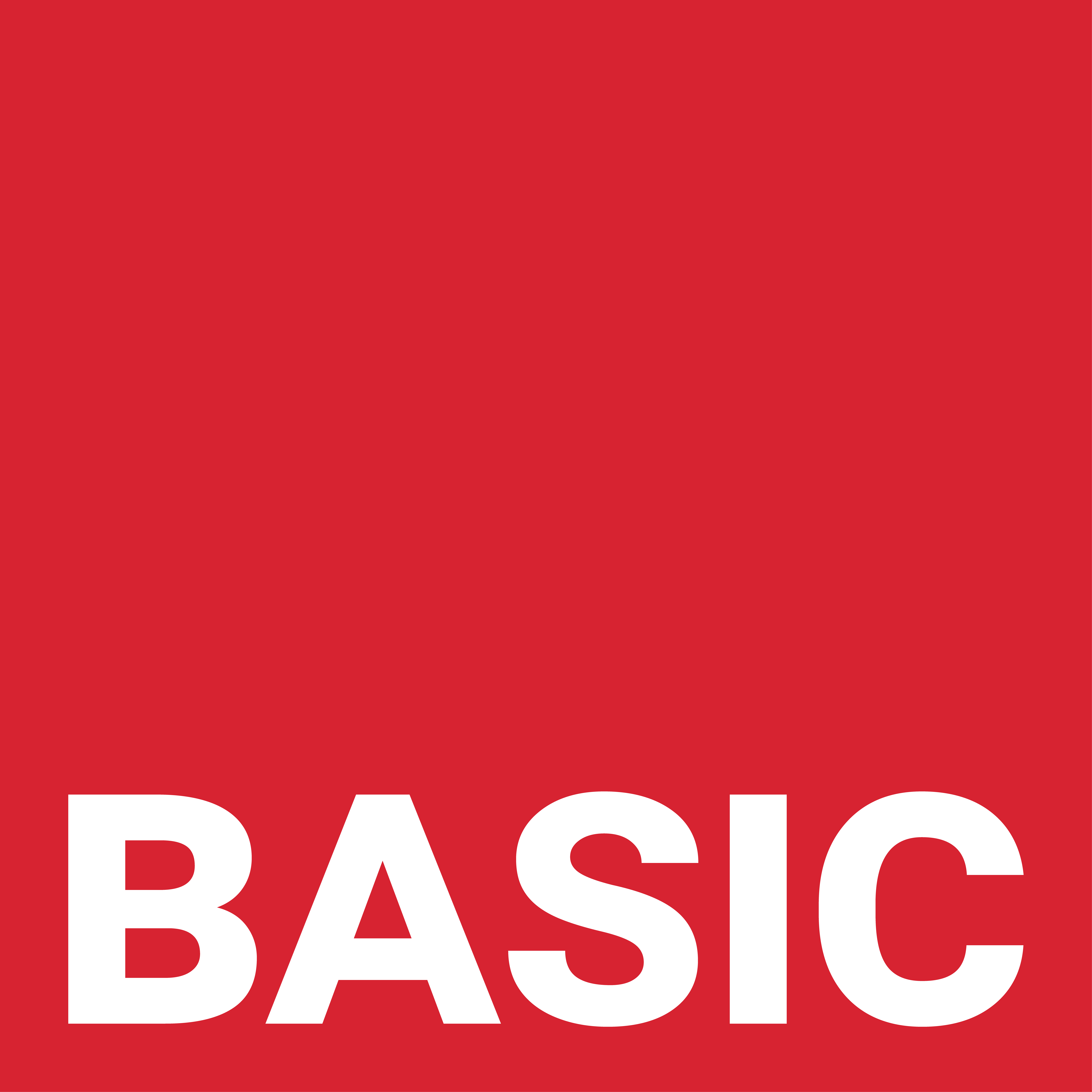This analysis is co-authored by Dr Arun Sahgal, Director, Forum for Strategic Initiatives, and Ambuj Sahu, PhD Candidate, Indiana University Bloomington. It is part of an occasional series of contributions, reflecting on the lessons of the Pahalgam episode for managing and preventing future crises in South Asia. We invite future contributions from expert and practitioner communities. The views expressed belong solely to the author of the article and do not reflect their government’s position, any affiliated institutions, or that of BASIC.
Operation Sindoor: The sub-continent’s first non-contact war
India’s precision strikes on terrorist infrastructure and military facilities in Pakistan and Pakistan-occupied Jammu and Kashmir (PoJK) have heralded a new response doctrine to acts of cross-border terrorism. Operation Sindoor, as it has been dubbed, marked a swift and decisive retaliation in the wake of the gruesome Pahalgam attacks, which claimed the lives of 26 innocent tourists, targeted solely on religious grounds. These attacks were incited by a provocative speech from Pakistan Army Chief General Asim Munir, who endorsed the two-nation theory and described Kashmir as Pakistan’s jugular vein. The speech was widely viewed as a direct incitement to terrorists and their handlers within the ISI.
India’s military response to this grave provocation was focused on the precise targeting of terror infrastructure not only in the POJK, but for the first time including headquarters of the terrorist groups Lashkar-e-Taiba (LeT) and Jaish-e-Mohammad (JeM)at Muridke and Bahawalpur. The operation was the result of two weeks of meticulous planning, during which entailed detailed intelligence gathering.
Operation Sindoor was unique in many ways. It was the subcontinent’s first non-contact war, marked by technology-driven kinetic activity involving missiles and drones. Neither side physically crossed the other’s territorial space. It showcased India’s military and technological superiority, restored strategic deterrence, and unveiled a new security doctrine. It upheld strategic autonomy, and established India as a decisive power prepared to take risks in pursuit of its national interests.
In the context of 21st-century geopolitics, the significance of this moment is no less than the Russo-Japanese War of 1904, which marked the arrival of Japan as a great power on the global stage. By its actions, India demonstrated its ability to employ military power in pursuit of its core national interests while managing the risk of escalation through demonstrated capability and intent.
The new normal
On 12 May, Prime Minister Narendra Modi articulated the core tenets of India’s new response doctrine. First, any terrorist attack on Indian soil would be met with assured and proportionate retaliation. Second, India would no longer be deterred by nuclear blackmail in its resolve to strike terrorist hideouts across the border. It called out the false equivalence that the international community tends to make between India and Pakistan under a nuclear umbrella, thereby ignoring Pakistan’s policy of state-sponsored terrorism. Third, India will not differentiate between terrorists and the government that harbours them. Mr Modi reiterated India’s long-held diplomatic position: terror and talks cannot go together.
- Assured Retaliation towards Acts of Terror
Operation Sindoor also marked a decisive departure in India’s approach to terrorism emanating from Pakistan. In previous instances—such as the 2016 surgical strikes and the 2019 Balakot airstrikes—India exercised restrained force, symbolic of resolve, yet avoided striking deep into Pakistan’s mainland. This time, however, the response was fundamentally different. India’s focus was on dismantling Pakistan’s terror factories across the entire operational chain.
Sites like Markaz Subhan Allah in Bahawalpur and Markaz Taiba in Muridke were not arbitrary targets—they were the nerve centres behind some of the most heinous attacks on India, including the IC814 hijacking, the 2001 Parliament attack, and the 26/11 Mumbai carnage. Camps in Sialkot, Muzaffarabad, and Barnala served as hubs for fanatical indoctrination and recruitment. Meanwhile, the Sarjal facility at Tehra Kalan was identified as a key weapons storage site, and Kotli and Muzaffarabad functioned as forward launchpads for terrorists infiltrating Indian territory.
The detailed targeting against terrorist networks inside Pakistan showed India pursuing a precise objective rather than belligerent goals such as territorial occupation or regime change. A clear new threshold has been established that terror attacks emanating from Pakistani soil will now be met with military force—not merely as a threat but as a firm precedent.
- Nuclear Blackmail will not go unchallenged
The most significant achievement of Operation Sindoor was posing a fundamental challenge to Pakistan’s nuclear doctrine. By treating terrorist attacks originating from Pakistani soil as acts of war, India signalled its intent not to let Pakistan’s nuclear capability deter it from using force-thus carving out space for military action below the nuclear threshold. Through a campaign defined by clear objectives, controlled escalation, and effective strategic messaging, India demonstrated the ability to call Pakistan’s bluff, exposing the limitations of its nuclear deterrent as a shield for the prosecution of terrorism.
Pakistan has long relied on the belief that its nuclear weapons can be leveraged to offset India’s conventional options. This perspective of using cross border terror became the basis of proxy warfare against India in Jammu and Kashmir secure in self-belief that Indian conventional responses can be contained through nuclear brinkmanship. At the heart lay the assumption that the cycle of conventional military response could spiral into a larger conflict breaching nuclear thresholds. This logic formed the essence of Pakistan’s Full Spectrum Deterrence doctrine, designed to forestall substantive Indian responses through the threat that Pakistan might be left with no option but to go up the nuclear escalation ladder.
India’s measured offensive action during Operation Sindoor starkly exposed the failure of Pakistan’s strategy of nuclear brinkmanship. By striking eleven major airbases, India effectively neutralised its adversary’s capacity to deliver a nuclear warhead via its air vector. Complementing this, India’s robust and layered air defence systems further constrained Pakistan’s missile delivery options. Even if Pakistan possessed a complete nuclear triad—which it does not—the Indian Navy’s vigilant containment of the Pakistani Navy in the Arabian Sea would have thwarted any attempt at a maritime strike. Moreover, the targeting of critical military assets such as Sargodha and Nur Khan underscored India’s capability to undertake precision non-strategic strikes on important strategic targets. A particular strike reportedly fell close to Pakistan’s command and control centre further indicating breach of air defences and India’s precision strike abilities. Unnerved by India’s actions, Islamabad reportedly sought US help for an off-ramp, underscored by a direct call from Pakistan’s Chief of the Army Staff (COAS) Gen Asim Munir to US Secretary of State Marco Rubio.
- State is not different from State-Sponsored Terrorism
Pakistan responded to India’s missile strikes on nine terror sites with drone and missile attacks targeting both Indian military assets and civilian populations. Viral images of Pakistan Army officers offering state funerals to LeT terrorists in Muridke only reinforced what Operation Sindoor sought to prove: direct complicity of the Pakistani state in sponsoring cross-border terrorism. It is this direct state complicity that made India draw a firm line—Pakistan’s military would no longer be viewed as distinct from the terrorist groups it harbours and enables.
In response, India launched a comprehensive offensive against Pakistan’s military infrastructure, fully cognisant of the risks of escalation. Operation Sindoor demonstrated India’s ability to strike targets deep within Pakistan—be it terror camps, drone hubs, airbases, or air defence systems—with precision and control, while absorbing Pakistani retaliation at minimal cost. Pakistan’s Operation Bunyan-un-Marsoos laid bare its desperation: the targeting of civilian centres by its military blurred any semblance of distinction between the state and the terrorists it shields. On the night of May 9–10, in a reckless escalation, Pakistan fired four missiles at New Delhi—all of which were intercepted well before nearing their intended targets.
India’s response served a dual purpose: to establish a clear dictum of imposing costs for future terrorist attacks and to deliver a controlled yet decisive retaliation short of full-scale war to Pakistan’s military.
Strategic Implications of Operation Sindoor
Operation Sindoor marks a watershed in India’s national security doctrine – an assertive pivot from reactive restraint to strong deterrence by punishment. For decades, Pakistan relied on the cover of nuclear brinkmanship and the fiction of plausible deniability to sponsor cross-border terrorism with impunity. That era is now decisively over.
By striking deep into the Pakistani mainland with precision, India not only imposed punitive costs for the Pahalgam massacre but also dismantled the myth of a no-go nuclear threshold. The message was unambiguous: terrorism, when abetted by the state, will invite a calibrated, controlled, yet uncompromising military response.
Operation Sindoor was not born out of adventurism but rooted in strategic clarity. India has asserted its sovereignty, its autonomy, and its resolve—on its own terms and without recourse to third-party mediation. The rules of engagement in the Indian subcontinent have changed, India will escalate conventionally as in Operation Sindoor to sub conventional attacks. The burden of further escalation will lie with those who use terror as an instrument of state policy.
Dr Arun Sahgal, a retired Brigadier, was previously the founding Director of the Office of Net Assessment, Indian Integrated Defence Staff (IDS), Ministry of Defence.
Ambuj Sahu is a PhD Candidate at Indiana University Bloomington.

